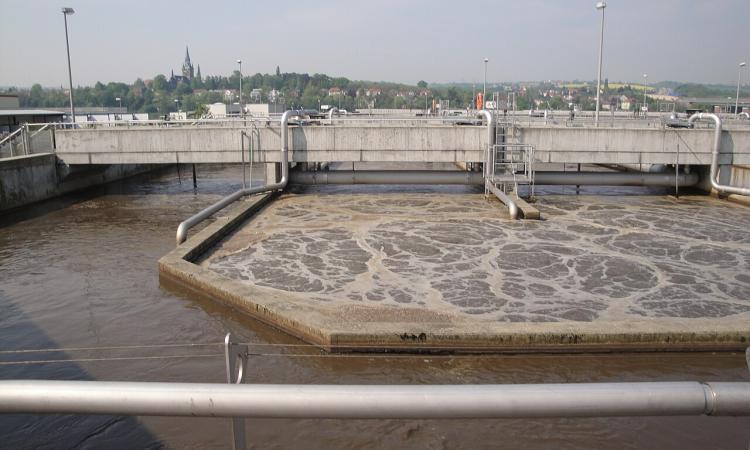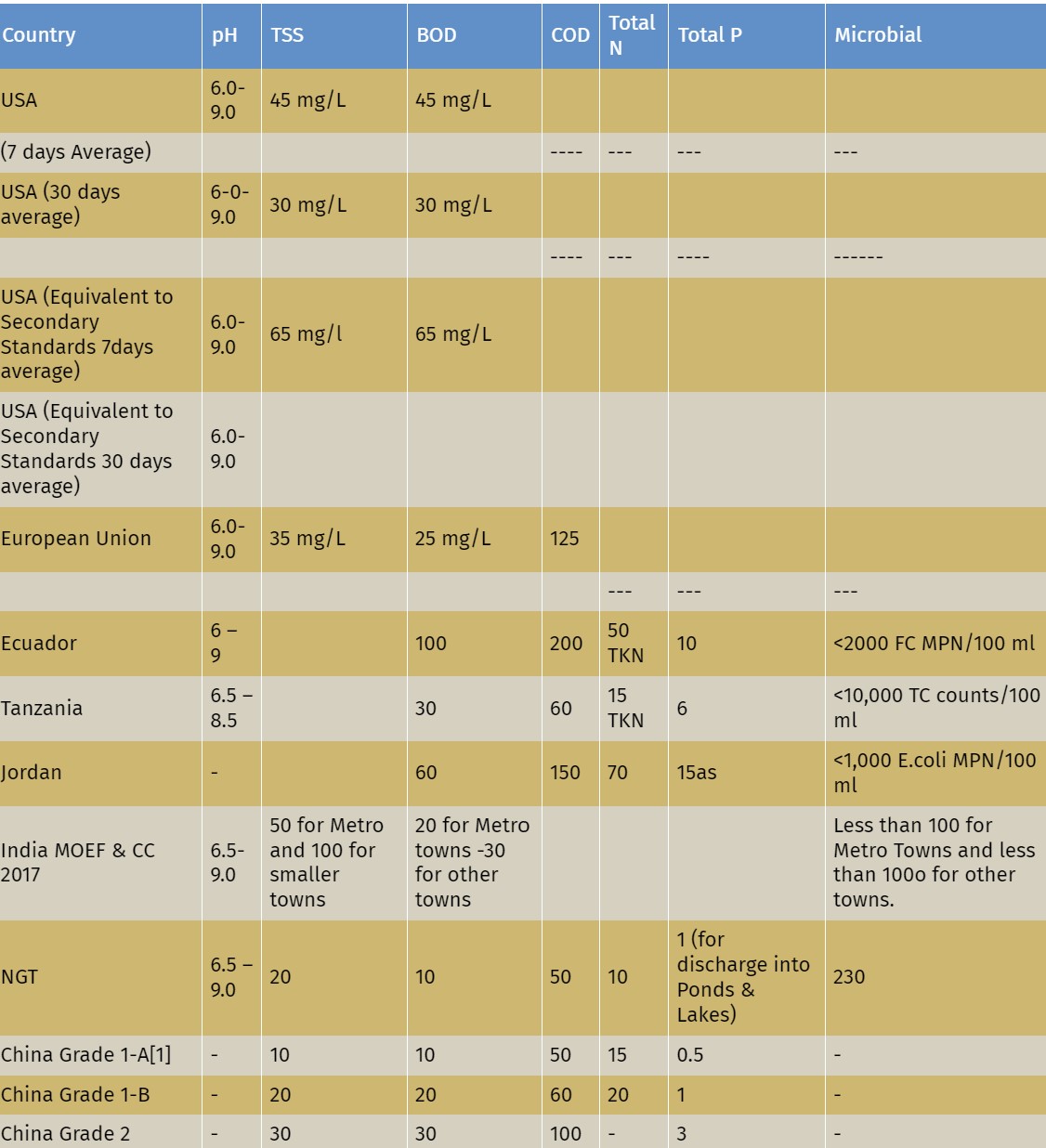
Contrary to popular belief, the technology to treat sewage and to convert it to potable quality has existed for about 60 years now. Windhoek, (the capital of Namibia) has been treating wastewater and using it for potable purposes since 1968. In recent years, Singapore too has been treating its wastewater to a far better quality than drinking water standards and reusing it for industrial purposes.
However, as the effluent outcomes are made stricter, the costs of treating wastewater increase exponentially. Thus, different standards are recommended for treatment of wastewater depending on its proposed uses to make the treatment process feasible and financially viable in the long run.
Discharge and reuse standards: Differences and dilemmas
Indian policy makers often fail to appreciate the difference between discharge and reuse standards. Discharge standards primarily work on the premise of dilution of treated water with fresh water to achieve the desired water quality. On the other hand, when wastewater is treated for reuse, it does not have the benefit of dilution and hence, should be treated to a higher order. Across the globe, secondary effluent standards are generally recommended for discharge and tertiary treatment standards for reuse.
The question of whether to treat water to secondary or tertiary or drinking water standards is more of a management issue than a technological one. This is because the costs of treating wastewater for reuse increase exponentially (both capital expenditure as well as O&M) while upgrading from secondary to tertiary levels, and an economic and ecological analyses is necessary to prevent the burden of high costs being transferred on to the taxpayers and public resources.
In addition, the use of wastewater is influenced by prevailing social behaviour, customs, awareness, extent of distribution mechanisms and scarcity. Evidence from across the globe shows that most of the reclaimed water, even of the highest quality, is used to meet agricultural or industrial usage while its demand for domestic purposes continues to be limited.
The need for standards
Most of the wastewater in India drains untreated into freshwater bodies such as rivers and one of the key functions of fixing discharge standards is to protect river water quality for its various uses including drinking, bathing etc and also for protection of river health and biodiversity.
Singapore, which is often considered as a model for water management in the world, has two different effluent standards for water bodies – those which are used as a source of drinking water, and those which are not used as a drinking water source. The discharge standards for both the waterbodies are included in Table 1 below.
Table1: Discharge standards of Singapore: Allowable limits for trade effluent discharge
*Controlled watercourse are those water bodies from which drinking water is sourced. A total of 36 items are monitored.
(Table Source: National Environment Agency, Government of Singapore (2024) Water Quality: Allowable limits for trade effluent discharge to watercourse or controlled watercourse).
Singapore is also widely acclaimed for reuse of its treated water NEWater. The quality of NEWater is stricter than drinking water standards set by the World Health Organisation (WHO) and is mostly used for wafer industries (which require very high-quality water) and delivered through specially constructed distribution pipes.
Singapore thus uses three effluent standards for treated water, two for dilution and one for reuse, and these standards are determined as per the usage of treated water. Thus, expensive tertiary treatment is not required unless dilution factor is insufficient, or the specific site sensitivities warrant tertiary treatment and may be recommended if the treated water is to be reused.
Thus, any plan for the reuse of water should take into consideration the purpose of reuse, conduct a cost-benefit analysis and plan for the setting up of a dedicated distribution system to prevent it from turning into a wasteful expenditure of public resources.
Global standards for wastewater treatment
The first set of standards of biochemical oxygen demand (BOD) and total suspended solids (TSS) were set up by the Royal Commission of Sewage in 1915 and have remained unchanged for many decades till UK decided to increase BOD5 limit to 25 to adhere to EU effluent standards. US EPA on the other hand has mandated a national limit of 30 BOD5 over 30 days average or BOD 45 for nature-based systems like waste stabilisation ponds. Tables 2, 3, 4 and 5 provide the discharge standards for USA and EU.
Table 2: Secondary Treatment Standards of USA

(Table source: United States Environment Protection Agency (2023) NPDES Permit Writers' Manual. Chapter 5. Technology Based Effluent Limitations, p 2.)
It is interesting to note that US EPA in 2012 rejected the demand to include tertiary treatment standards across USA as it felt that the costs of upgrading the existing water treatment infrastructure and its O&M were too high. The US Congress also acknowledged that some biological treatment systems could achieve secondary standards, but not consistently. However, these systems were thought to be important for small communities who might not afford expensive secondary treatment, and the US Congress promulgated an equivalent set of secondary standards for such nature-based solutions.
Table 3: Equivalent to Secondary treatment standard of US

(Table source: United States Environment Protection Agency (2023) NPDES Permit Writers' Manual. Chapter 5. Technology Based Effluent Limitations, p 3.)
The European Union also promulgated its wastewater discharge standards in 1991, which were to be adopted by the member countries. It is to be noted that even European Union has recommended secondary treatment for urban settlements and requires nitrogen and phosphorus removal only in sensitive areas.
Table 4: Secondary discharge standards for European Union

(Table Source: Council. Council Directive of 21 May 1991 concerning urban waste water treatment, Official Journal of European Communities. , No L 135/40)
Table 5: EU Directives on nutrients standards for sensitive areas

(Table Source: Council. Council Directive of 21 May 1991 concerning urban waste water treatment, Official Journal of European Communities. , No L 135/40)
Table 6: Discharge standards across different countries of the world

(Table Source: Adapted by referring to USEPA, European Union Directive on Urban Wastewater 1991, paper by Zhou, Y et al. and paper by Tatjana, S et al.)
In India, the Environment Protection Act (EPA)1986 is the overarching regulation that provides the central government the authority to lay down standards for environmental discharge for quality of water, air, and soil for various areas and purposes.
The Act lays down that such standards need to be notified by the central government in the official Gazette. Section 3 and section 6 of EPA clearly mention the powers of the central government to take decision and frame rules for such purposes.
The Act also gives power to state governments to make the standards more stringent with respect to specific industry or locations after recording reasons in writing. However, in recent years there have been a few instances wherein different decision-making authorities have taken different views leading to major confusion in decision making.
Harsh Vardhan is the Chief Executive Officer of CDD India.
This is the second of a five-part series of articles on ‘Wastewater management and its evolution’. Please read the first article third and fourth article from the series below.
1. From pollution to solutions
3. India’s efforts at water pollution control: Legislative frameworks and real-world impacts
4. NGT’s uniform standards: A controversial approach to sewage management
/articles/wastewater-discharge-vs-reuse-understanding-standards-and-impact-water-resources